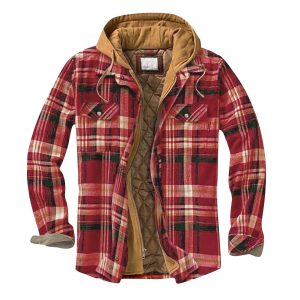The mid-20th century was a pivotal time for lesbian culture and style. This period saw the emergence of a vibrant subculture of queer women, who carved out spaces for themselves and created their own unique fashion sensibilities. This blog post will explore some of the key features of midcentury lesbian fashion and style, and how they continue to influence contemporary fashion.
The 1950s and 1960s were a time of significant social change, and this was reflected in the fashion of the period. The styles of the time were heavily influenced by mainstream culture, which favored conservative, feminine looks. However, lesbians and other queer women were quick to subvert these norms, creating a style that was both distinctive and rebellious.

One of the key features of midcentury lesbian fashion was a rejection of traditional gender roles. This was reflected in the adoption of masculine styles, such as tailored suits, button-up shirts, and slacks. These styles were often paired with short haircuts, which were seen as a rejection of traditional femininity. This look became known as the "butch" style, and it was embraced by many lesbians as a way of expressing their gender identity.
At the same time, other lesbians embraced a more feminine style, which was characterized by flowing skirts, colorful blouses, and bold accessories. This style, known as "femme," was often paired with longer hair, and it represented a rejection of traditional gender norms as well. Femme lesbians often used their clothing to signal their queer identity, incorporating symbols like the Venus symbol or the rainbow flag into their outfits.

Of course, not all lesbians fit neatly into these two categories. Many women blended elements of both styles, creating a look that was uniquely their own. This individualistic approach to fashion was a hallmark of midcentury lesbian culture, and it remains an important aspect of queer fashion today.
Another key feature of midcentury lesbian fashion was a focus on comfort and practicality. This was reflected in the use of sturdy fabrics like denim and flannel, as well as the adoption of flat shoes and practical bags. This practical approach to fashion was not just a matter of personal preference; it was also a way of navigating a world that was often hostile to queer people. By dressing in practical, comfortable clothes, lesbians were able to move through the world with greater ease and safety.
Midcentury lesbian fashion was not just about clothes, however. It was also about creating community and connection. Many lesbians would gather at bars and clubs, where they could socialize with like-minded women and share fashion tips and tricks. These gatherings were often characterized by a sense of camaraderie and joy, as women celebrated their queer identities and their unique fashion sense.

Today, midcentury lesbian fashion continues to influence contemporary fashion in a number of ways. The popularity of androgynous styles, for example, can be traced back to the butch/femme dichotomy of the mid-20th century. The use of practical fabrics and flat shoes has also become more mainstream in recent years, as people have embraced a more casual and comfortable approach to fashion.
Overall, midcentury lesbian fashion and style were an important part of queer history, and it continues to shape the way we think about fashion and identity today. By rejecting traditional gender norms and embracing individualism, lesbians of the mid-20th century created a style that was both rebellious and inspiring. As we continue to push for greater acceptance and visibility for LGBTQ+ people, it's important to remember the contributions of those who came before us and to celebrate the rich history of queer fashion and style.




